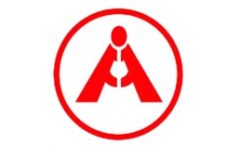
Its normal balance is on the credit side and will be offset with the purchases account when the company calculates cost of goods sold during the accounting period. The credit term usually specifies the amount of discount together with the time period it offers, e.g. “2/10 net 30” or “2/10 n/30”. The net method works by recording any purchase discounts obtained from suppliers as an immediate offset to the cost of goods purchased. This means that the purchase amount will be reduced by the value of any discounts and only the net total (after taking into account discounts) will be recorded in accounts payable. In this section, we illustrate the journal entry for the purchase discounts for both net methods vs gross method under the periodic inventory system. In order to illustrate precisely accounting for purchase discounts, let’s assume that ABC Co purchases merchandise inventory from its supplier on November 02, 20X1 at the original invoice amount of $1,500.

However, under the net method, we need to record adjusting entries to recognize the loss of the discount. The net method requires companies to record the discounted amount as their cost of goods sold, while with the gross method, they record the total invoice amount before applying any discounts. From a financial perspective, purchase discounts are cost-effective ways for businesses to move stock quickly and maintain a healthy profit margin. If the business does not pay within the discount period and does not take the purchase discount it will pay the full invoice amount of 1,500 to the supplier and the discount is ignored. At the date of purchase the business does not know whether they will settle the outstanding amount early and take the purchases discount or simply pay the full amount on the due date. In these circumstances the business needs to record the full amount of the purchase when invoiced and ignore any discount offered in the supplier terms.
How to Account for Sales Discounts
From an accounting perspective, it can be seen that when the purchase is made (and the invoice is generated), the journal entry to record this transaction is Debit – Purchases, and Credit – Accounts Payable. The discount rate reduces future cash flows, so the higher the discount rate, the lower the present value of the future cash flows. As this implies, when the discount rate is higher, money in the future will be worth less than it is today—meaning it will have less purchasing power. If one knows (or can reasonably predict) all such future cash flows (like the future value of $110), then, using a particular discount rate, the present value of such an investment can be obtained. Purchase Discounts, Returns, Allowances and other contra expense accounts may be presented on the income statement as individual line items or aggregated into a single contra-expense line if immaterial or preferable. In the accounting general ledger, the credit balances of the contra purchase expense accounts reduce and offset the usual debit balances reported in the standard purchase expense accounts.
This common payment option is contained within the invoicing code “2/10 net 30,” which usually appears in the header line of an invoice. A company may choose to simply present its net sales in its income statement, rather than breaking out the gross sales and sales discounts separately. This is most common when the sales discount amount is so small that separate presentation does not yield any material additional information for readers. A sales discount is a reduction in the price of a product or service that is offered by the seller, in exchange for early payment by the buyer. A sales discount may be offered when the seller is short of cash, or if it wants to reduce the recorded amount of its receivables outstanding for other reasons. The net method should be used when discounts are taken on purchases from suppliers.
Best Practices for Purchase Discounts Taken
The report shows what your company is worth, what it could be worth, and how to get there. Click here to learn more about the growth assessment and profit & value enhancement services. First, when computing the non-controlling interest, we apply the discount for lack of control. There is obviously no discount for lack of control for the controlling interest. Purchase discounts can be a great way to increase sales and boost your bottom line. But it’s important to understand how they work and choose the right method for your business.
- Therefore, purchases, along with any payables in the case of a credit purchase, are recorded net of any trade discounts offered.
- Under perpetual inventory system, the company does not have a purchase account nor a purchase discount account.
- Discounting is the process of determining the present value of a payment or a stream of payments that is to be received in the future.
- Commercial banks in the U.S. have two primary ways to borrow money for their short-term operating needs.
- This includes the illustration of the net method vs gross method of recording purchase discounts both under the perpetual inventory system and periodic inventory system.
- In this blog, I discuss the main factors that have a material impact on the above discounts.
Bike LTD purchases a bike from BMX LTD and pays within 10 days of the date of purchase. In this instance the accounts payable balance is cleared by the cash payment and no purchase discount is recorded. The business pays cash of 1,470 and records a purchase discount of 30 to clear the customers accounts payable account of 1,500. If the business pays the supplier within the 10 days and takes the purchases discount of 30, then the business will only pay cash of 1,470 and purchase discounts accounts for the difference with the following purchases discounts journal entry. The purchase discount is based on the purchase price of the goods and is sometimes referred to as a cash discount on purchases, settlement discount, or discount received. A common example of a purchase discount are the NET D payment terms, such as 2/10 Net 30, where a buyer receives a 2% discount if an invoice is paid early within 10 days, otherwise a full payment is due in 30 days.
What are Purchase Discounts, Returns and Allowances?
The full amount owed to the supplier is shown as a balance sheet liability (accounts payable) and included as purchases or expenses in the income statement. This transaction is more fully explained in our purchases on account example. The discount rate is the lending rate at the Federal Reserve’s discount window, where banks can get a loan if they can’t https://www.bookstime.com/ secure funding from another bank on the market. A discount rate is also calculated to make business or investing decisions using the discounted cash flow model. Such an analysis begins with an estimate of the investment that a proposed project will require. Using the discount rate, it is possible to calculate the current value of any future cash flows.
- This means that the company can deduct $280 (1% of $28,000) if it pays the invoice within 10 days.
- The same concept of discounting is used to value and price financial assets.
- The net method of recording purchase discounts records the purchase and the accounts payable net of the allowable discount.
- If the entity has no distribution history, the discount would be at the higher end.
A buyer debits Cash in Bank if a purchase return or allowance involves a refund of a payment that the buyer has already made to a seller. A buyer debits Accounts Payable if the original purchase was made on credit and the payment has not yet been made to a seller. New York Business Valuation Group provides high quality business valuation services nationwide at a reasonable cost. We welcome your quote requests and offer a FREE initial phone consultation.
